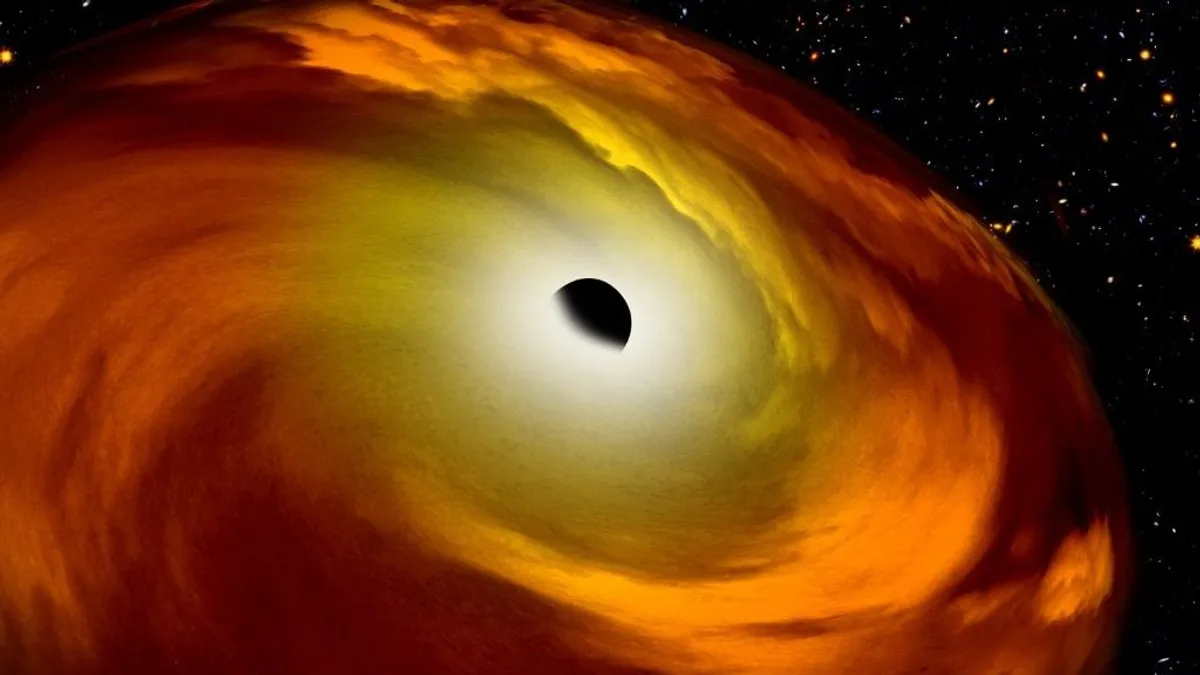The flight's hypothetical destination is a supermassive black hole with a mass 4.3 million times the mass of our Sun. Such a black hole can also be found at the center of the Milky Way Galaxy. Unlike reality, the black hole in the video does not rotate; This simple fraud was necessary to simplify the calculations – writes A NASA.
The event horizon of the simulated black hole (That is, the limit beyond which there is no room for light to returnIts area is 25 million km, or 17 percent of the average distance between Earth and the Sun. The black hole is surrounded by a cloud of glowing gas called the accretion disk. A stunning ring of light can be seen around the black hole, which is created by photons trapped in a gravitational trap at the edge of the black hole.
What happens when we cross the event horizon of a black hole?
As the camera approaches the black hole and approaches the speed of light, the light from the accretion disk and bright stars in the background intensifies. At the beginning of the film, the camera is approximately 400 million miles from the black hole, and as it approaches the object, the view of the accretion disk, photon ring, and night sky changes radically due to the distortion of space-time.
In real time, the camera takes up to 3 hours to reach the event horizon, completing two full rotations lasting about 30 minutes. But the observer from afar does not see any of this. For him, it is as if the camera is frozen in space-time. First it slows down and then stops literally before the event horizon. Because of this phenomenon, astronomers called black holes frozen stars.
Beyond the event horizon, not only objects but even spacetime itself flow into the black hole at the speed of light. Everything is a one-dimensional point of a black hole, so-called. It is heading towards a singularity, where the laws of physics as we know them cease to exist.
Due to the invincible gravitational field, the camera crosses the event horizon and turns into a long spaghetti-like string, which… macaroni We are calling












































